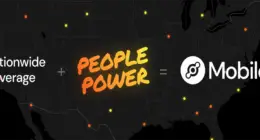The beginning of a decade is always a time for prognostication, and this year is no exception. This is an interesting collaborative look on mobile device trends for 2020. A lot of these trends are already well on the way to widespread adoption, and I would argue that many will be seen by 2015. From Mobile Trends:
Here are my own predictions for the 2010s:
- Continued Convergence – Phone/Camera/Internet – Look for the decline of the “Point and Shoot” pocket camera as mobile phone cameras increase in quality to being on-par with smaller pocket cameras. Many pocket cameras already have miniscule sensor sizes that could fit into a cell phone device. A manufacturer will include this into a cell phone with an a new UI which will match P&S cameras for usability and customization. Internet will continue to grow in presence and utility on mobile devices.
- Location Tracking Everywhere – Your device will automatically report to your friends where you are and what you are doing. Privacy controls will be built in to allow as much or as little sharing as possible, with many folks opting to disable the ability altogether. However, parents will still be able to “track” their kids.
- Wireless Sensor Networks Will Become Ubiquitous – The continuing decline of the cost of these platforms will allow embedding in almost every imaginable place. Anywhere from road sensors to bridge monitors to traffic cameras will feature these devices.
- The Rise of Data-Only High Speed Mobile Providers – Look for providers who provide plain high speed mobile access via WiMax or existing 3G/4G infrastructure. While the cost will be more than the current $30-$60 a month for current providers, the net-cost of mobile voice+mobile data will decrease because of the use of VoIP providers. Dual GSM/WiMax devices like the HTC Max 4G will become common.
- Existing providers will fight tooth and nail to resist becoming “dumb pipes” – Much as with landline connections, existing wireless providers (specifically AT&T and Verizon) will fight for their lives using lobbiers and lawyers to prevent themselves from becoming a content-neutral data providers. They will provide shoddy mobile connectivity and blame it on technical restrictions to prevent other providers from piggybacking on their wireless data connections. Have you read your Terms of Service? They already prohibit anything other than Voice and Web, although I have almost never seen it enforced.
Do you have any predictions for the mobile world in 2020?







2 comments
Comments are closed.